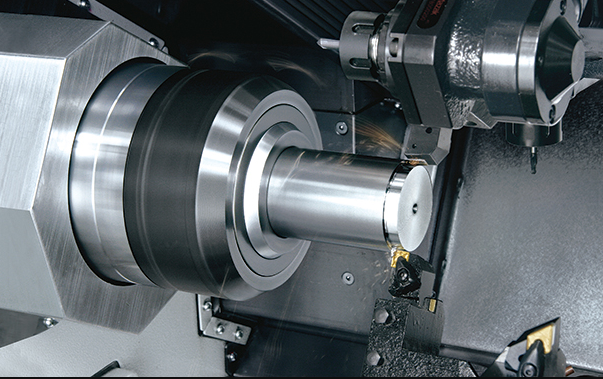E-postformatfeil
emailCannotEmpty
emailDoesExist
pwdLetterLimtTip
inconsistentPwd
pwdLetterLimtTip
inconsistentPwd

Nyheter
What Are the Uses of Cast Steel and Cast Iron?
Cast steel and cast iron are the two major types of cast iron-carbon alloys. The difference between them is the carbon content in the alloy. Cast iron refers to an iron-carbon alloy with a carbon content greater than 2.14% or a eutectic structure in the structure. The cast iron used in industry is usually not a simple iron-carbon binary alloy, but a multi-component alloy with iron-carbon-silicon as the main element. Iron-carbon alloys with a carbon content of less than 2.14% are called cast steels. In addition, silicon, manganese, phosphorus, and sulfur are also long-lived elements in cast steels.
Types and applications of cast iron

Gray cast iron (gray cast iron): The carbon mainly appears in the form of flake graphite, the fracture is gray, and the matrix form is: ferrite, pearlite, pearlite plus ferrite. Because gray cast iron has certain strength, good shock absorption, wear resistance, and excellent machinability and casting processability, as well as simple production and low cost, it is the most widely used in industrial production and civil life.
Inoculated cast iron: It still belongs to the category of gray cast iron, which is hypoeutectic gray cast iron obtained after the molten iron is inoculated. The carbon that inoculates cast iron is mainly in the form of fine flake graphite, and the matrix forms are pearlite and ferrite. In the inoculated cast iron after inoculation treatment, Si is often adjusted to 1.2%--1.8%, the eutectic group is significantly refined, the size and distribution of graphite are improved, and the strength is increased, so the inoculated cast iron is often called high. Strength grey cast iron. The tensile strength of inoculated cast iron can reach 200--400Mpa, and the bending strength can reach 450--600Mpa, but the elongation and impact toughness are still low, so it is often used for important castings with small dynamic load and high static strength requirements. , such as machine bed, engine block, etc.
Ductile iron: It is a cast iron in which the molten iron is treated with nodularizing agent instead of heat treatment, so that most or all of the graphite is spherical, and sometimes a small amount is flocculent. But ductile iron can change the matrix form after a certain heat treatment. The matrix form of ductile iron is: ferrite, pearlite, ferrite plus pearlite, bainite, austenite plus bainite. (Aobe) ductile iron is a new type of structural material developed in the late 1940s. In addition to good shock absorption, wear resistance, machinability and casting processability similar to gray cast iron, it also has a Ordinary gray cast iron has much higher strength, plasticity and toughness, the tensile strength can reach 1200--1450Mpa, the elongation can reach 17%, and the impact value can reach 60J/cm2, so it has been used in the production of complex stress, strength and toughness. , parts with high requirements for wear resistance, such as crankshafts and camshafts of automobiles, tractors, internal combustion engines, etc., as well as medium-pressure valves of general machinery.
Vermicular graphite cast iron: It is cast iron in which the molten iron has been vermicularized, and most of the graphite is vermicular graphite. The matrix form of vermicular graphite iron is: ferrite, pearlite, ferrite plus pearlite. Vermicular graphite cast iron is a new type of cast iron material developed in the 1960s. Its tensile strength can reach 500Mpa, which is higher than gray cast iron, and has better casting performance than ductile iron. In addition, it has good thermal conductivity. Therefore, it has been used. It is used in the production of diesel engine cylinder heads, motor casings, drive boxes, brake drums, hydraulic valve bodies, metallurgical steel ingot molds, etc.
Heat-resistant cast iron: It is a cast iron whose oxidation or deformation meets the requirements of use at high temperatures. Certain alloying elements can be added to cast iron to improve the oxidation resistance and growth resistance of cast iron at high temperatures. Usually, heat-resistant cast iron can be divided into three categories according to the added alloying elements: silicon-containing heat-resistant cast iron, aluminum-containing heat-resistant cast iron, chromium-containing heat-resistant cast iron, mainly used for sintering machine trolleys, oil refining furnace tube plates, electric furnace furnaces Doors, boiler grate, flue baffle, heat exchanger, etc.
Corrosion-resistant cast iron: It is cast iron with certain corrosion resistance. Such as high-silicon acid-resistant cast iron, high-silicon molybdenum-chlorine-resistant cast iron, aluminum cast iron, high-chromium cast iron, nickel cast iron, alkali-resistant cast iron, etc., which are mainly used for many parts in petroleum, chemical, fertilizer and other equipment.
Conclusion
For more information about cast iron pressure cooker,best cast iron skillets,brazing cast iron, we are glad to answer for you.

